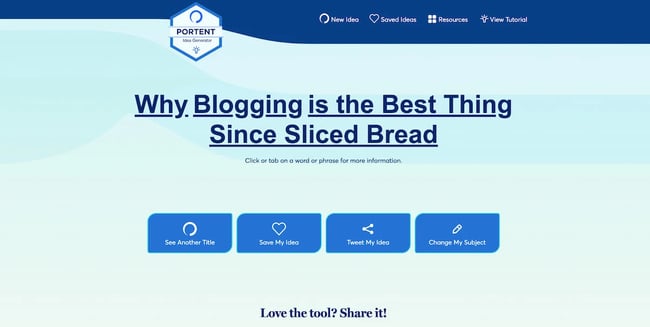Latest Update in Decreasing Term Life Insurance for 2024 .Discover the Latest Update in Decreasing Term Life Insurance for 2024. Discover the latest update in decreasing term life insurance for 2024 and learn how it can benefit you and your loved ones. Let me guide you through this important decision with simple and clear language. Don’t miss out on securing your family’s financial future.
Discover the Latest Update in Decreasing Term Life Insurance for 2024 Discover the Latest Update in Decreasing Term Life Insurance for 2024 of expertise in Discover the Latest Update in Decreasing Term Life Insurance for 2024
Decreasing Term Life Insurance Latest Update in 2024: What You Need to Know
Life insurance is a crucial aspect of financial planning, providing protection for your loved ones in the event of your death. However, with the ever-changing landscape of the insurance industry, it is important to stay updated on the latest developments and changes that may impact your coverage and benefits. In this blog post, we will explore the intricacies of the decreasing term life insurance latest update in 2024 and discuss how it may affect policyholders.
Understanding Decreasing Term Life Insurance
Decreasing term life insurance is a type of life insurance policy that provides coverage for a specified period of time, usually 10, 20, or 30 years. Unlike traditional life insurance, the coverage amount decreases over time, typically following a predetermined schedule. This type of policy is often used to cover a specific financial obligation, such as a mortgage or loan, in the event of the policyholder’s death.
The Latest Update in 2024
Starting in 2024, there will be a new option for policyholders of decreasing term life insurance. The latest update allows for a “reset” of the coverage amount after a predetermined period of time, typically halfway through the policy term. This means that the coverage amount will increase back to its original value, rather than continuing to decrease.
Pros and Cons of the Latest Update
As with any change, there are both advantages and disadvantages to the latest update in decreasing term life insurance. Let’s take a closer look at some of the pros and cons.
Pros:
- Increased coverage: The new option for a “reset” allows for a higher coverage amount, providing better protection for loved ones.
- Flexibility: The ability to reset the coverage amount gives policyholders more flexibility and control over their insurance coverage.
Cons:
- Higher premiums: With the reset option, premiums may increase as the coverage amount increases, making the policy more expensive.
- Complexity: The new update adds a layer of complexity to an already intricate type of life insurance, which may make it more confusing for policyholders.
Exploring the Dynamics of Decreasing Term Life Insurance
Now that we understand the latest update in decreasing term life insurance, let’s take a closer look at the dynamics within this context. Here are some key factors to consider:
Reset point:
The reset point is the designated time in the policy term when the coverage amount will be reset to its original value.

Depending on the policy, this may occur at different intervals, such as halfway through the term or every five years.
Reset amount:
The reset amount is the difference between the current coverage amount and the original value. This is the amount that will be added back to the coverage, giving policyholders a higher amount of protection.
Premiums:
As mentioned earlier, the reset option may lead to higher premiums as the coverage amount increases. It is important for policyholders to carefully consider the impact on their budget before opting for this new update.
Existing policies:
If you currently have a decreasing term life insurance policy, it is important to check with your insurance provider to see if the latest update applies to your policy. Some providers may automatically include the reset option, while others may require you to opt-in or purchase a new policy.
The Importance of Staying Updated
As with any type of insurance, it is crucial to stay updated on the latest developments and changes to ensure that your coverage still meets your needs. With this latest update in decreasing term life insurance, it is important to review your policy and consider if the reset option is beneficial for you.
The Latest Update on Decreasing Term Life Insurance in 2024: What You Need to Know
Life insurance is an essential aspect of financial planning. It provides your loved ones with financial security in the event of your unexpected death. However, as life changes, your insurance needs may also change. With this in mind, the insurance industry is constantly evolving to meet the demands of its customers. In particular, decreasing term life insurance has seen a recent update in 2024. In this article, we will explore the intricacies of this update and what it means for policyholders.
What is Decreasing Term Life Insurance?
Before delving into the latest update, let’s first understand what decreasing term life insurance is. It is a type of life insurance where the death benefit (the amount paid to the beneficiary upon the policyholder’s death) decreases over time. This means that the premium (the amount paid by the policyholder to the insurance company) also decreases over time. Decreasing term life insurance is often used to cover a specific debt, such as a mortgage or a loan, as the death benefit can be tailored to match the decreasing balance of the debt.
The Latest Update in 2024: What has Changed?
In 2024, the insurance industry saw a significant update in the world of decreasing term life insurance. Previously, this type of insurance had a fixed term, meaning the policy would expire after a specific number of years, and the death benefit would no longer be paid out. However, this latest update has introduced the option for a renewable decreasing term life insurance policy.

A renewable policy allows the policyholder to renew their policy after the initial term expires, without having to go through the underwriting process again. This means that an individual can continue their decreasing term life insurance coverage for an extended period, providing continuous financial security for their loved ones.
Renewability and its Impact on Premiums
While the option for a renewable policy may seem appealing, it is essential to understand its impact on premiums. As with any type of insurance, the costs will increase with age. For a renewable decreasing term life insurance policy, this means that the premiums will also increase every time the policy is renewed.
It is important to note that the increase in premiums may not be significant, and may even be lower than obtaining a new policy at an older age. However, it is crucial to consider your current and future financial situation before deciding on a renewable policy.
The Importance of Regularly Reviewing Your Coverage
With the introduction of renewable decreasing term life insurance, the importance of regularly reviewing your coverage cannot be stressed enough. As mentioned earlier, life changes, and so do your insurance needs. It is essential to reassess your coverage every few years to ensure that it aligns with your current financial situation and goals.
For example, if you have taken out a mortgage, it may make sense to have a decreasing term life insurance policy that matches the decreasing balance of your debt. However, if you have paid off your mortgage, you may no longer need as much coverage. This is where a renewable policy can be advantageous, as it allows you to adjust your coverage without having to go through the underwriting process again.
What Happens to Your Policy if you Choose not to Renew?
While having the option to renew your decreasing term life insurance policy may provide peace of mind, it is essential to consider what happens if you choose not to renew. In this case, the policy will expire at the end of the term, and the policyholder will not receive any death benefit. This is why it is crucial to regularly review your coverage and reassess your needs to ensure that you are adequately protected.
How Can You Determine the Right Coverage Amount?
Determining the right coverage amount for your decreasing term life insurance policy can be challenging. You want to ensure that your loved ones are financially secure in the event of your death, but you also want to avoid paying for excessive coverage. One way to determine the right amount is to assess your current and future financial obligations, such as any outstanding debts, future education costs, and day-to-day expenses.
It is also recommended to work with a financial advisor or insurance agent who can help you navigate through your different options and provide expert advice on the coverage amount that best suits your needs.
The Benefits of an Accelerated Death Benefit
Another important aspect to consider when choosing a decreasing term life insurance policy is the inclusion of an accelerated death benefit. This means that if the policyholder is diagnosed with a terminal illness, they can receive a portion of their death benefit before passing away. This can help cover medical expenses and provide financial support during a difficult time.
Not all insurance companies offer this option, so it is essential to inquire about its availability and if there are any restrictions or limitations.
Conclusion
In 2024, the insurance industry saw a significant update in decreasing term life insurance with the introduction of a renewable policy. This offers policyholders the option to renew their coverage after the initial term expires, providing continuous financial security for their loved ones. However, it is important to understand the impact on premiums and to regularly review your coverage to ensure it aligns with your current and future financial needs.
Working with a professional can also help you determine the right coverage amount and consider additional options, such as an accelerated death benefit. Remember, life is unpredictable, but with the right insurance coverage, you can provide your loved ones with peace of mind and security for the future. Discover the Latest Update in Decreasing Term Life Insurance for 2024

What is decreasing term life insurance?
Decreasing term life insurance is a type of life insurance policy where the death benefit decreases over time. This means that the payout amount decreases each year until it reaches zero, typically over the course of the policy’s term.
How does decreasing term life insurance work?
When you purchase a decreasing term life insurance policy, you choose a specific term (e.g. 10, 20, or 30 years) and a death benefit amount. As time passes, the death benefit decreases until it reaches zero. This type of policy is often used to cover a specific debt, such as a mortgage, that decreases over time.
What are the benefits of decreasing term life insurance?
One of the main benefits of decreasing term life insurance is that it is typically more affordable than other types of life insurance policies, such as whole life or universal life. Additionally, since the death benefit decreases over time, you may only pay for the coverage you actually need.
Can I add a rider to my decreasing term life insurance policy?
Yes, some insurance companies allow you to add riders to your decreasing term life insurance policy for an additional cost. Common riders include accidental death benefit, disability waiver of premium, and accelerated death benefit.
Is decreasing term life insurance renewable?
In most cases, decreasing term life insurance policies are not renewable. This means that once the term ends, you will need to purchase a new policy if you still require life insurance coverage.
What happens to my premiums if I outlive my decreasing term life insurance policy?
If you outlive your decreasing term life insurance policy, you may choose to let the policy expire or renew it for another term. However, since you will be older, your premiums will likely be higher if you choose to renew.
Can I convert my decreasing term life insurance policy to a whole life policy?
Some insurance companies offer a conversion option for their decreasing term policies, allowing you to convert to a whole life policy without undergoing a medical exam. However, this option is usually only available during a specific period of time.
Can I change the death benefit amount on my decreasing term life insurance policy?
No, the death benefit amount on a decreasing term life insurance policy is set when the policy is purchased and cannot be changed after the fact. It will decrease as the policy ages, regardless of any changes you may wish to make.
What happens if I miss a premium payment on my decreasing term life insurance policy?
If you miss a premium payment on your decreasing term life insurance policy, the policy may lapse, meaning that the coverage will end. However, some policies may include a grace period, allowing you to make a late payment without losing coverage.
Is decreasing term life insurance the right choice for me?
The answer to this question depends on your individual needs and circumstances. If you are looking to cover a specific debt that decreases over time, such as a mortgage, then decreasing term life insurance may be a good fit for you. However, it’s always best to consult with a licensed insurance agent to determine the best life insurance policy for your unique situation. Discover the Latest Update in Decreasing Term Life Insurance for 2024
